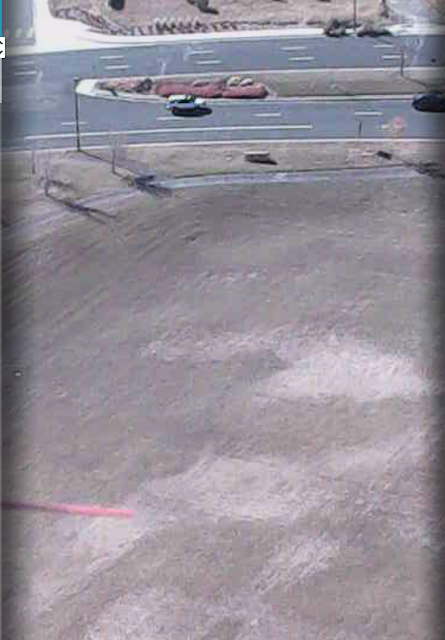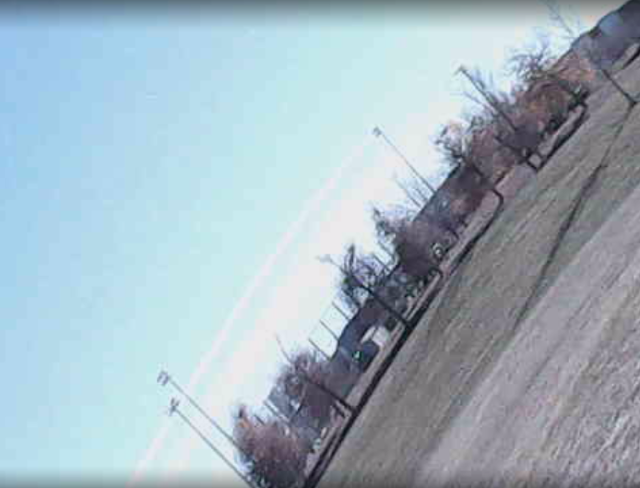Three Colorado front range rocketeers made yet another trek to Dove Valley Regional Park in Centennial to enjoy near perfect rocket launching weather. Temperatures were in the mid 60s with plenty o' sunshine and minimal wind conditions.
Lee Reep started things off with a nice flight of a Hex 3 on an A8-3 motor. This motor was a late 1980s MRC Tracker. It performed great!
My first flight of the day went to an EAC Viper clone powered by an A10. Recovery was by para-wad, but the model was returned intact. This flight was a bit of a milestone in that it marked my 150th model rocket launch since becoming a BAR.
The next model to come out of my Sterlite tote box was the Estes Lynx. Flying on an A10-3T motor, the little model boosted nicely, but was again afflicted with parachute failure. Since the Lynx has a lot of fin area, it didn't suffer any damage from its 'break-apart' recovery mode.
Lee was up again with an Estes Dragonfly Boost/Glider. Flying on a 1/2A3-2T, the model boosted very well, but the glider hung up on the streamer. It descended for about half of its attained altitude, when it detached and settled into a good glide. No Red Baron for Lee today!
My third flight of the day was turned in by the 'old fleet' Delta-2 Astrocam carrier with a custom made payload section. A nice boost on a B6-4 motor was followed by yet another 'chute' mishap. That's three in a row. Sheesh! Again, the model was recovered in undamaged condition, thanks to the soft turf of the Dove Valley field.
Lee's next flight was made by an Estes Ricochet. Powered by an A10-3T motor, the bird turned in a great flight. Despite successfully deploying the parachute, the model popped a fin on the landing.
During this entire time, Jim Gazur was at his prep area readying his first model of the afternoon. Again, he brought out the big guns - his second launch of the 1:100 Soviet N1 Moon Rocket from David Koo. This time the impressive model was set to fly on a G74-4W motor!
Liftoff was spectacular with the model boosting to 346 feet according to the on-board altimeter. Unfortunately, after ejection, the shock cord or shroud lines tangled with the parachute, preventing deployment.
The N1 took a fairly hard landing which caused substantial damage to the aft end. Jim says it is repairable. This G motor flight broke Jim's record for the largest flown at Dove Valley. The same model flew back in early October on F power.
My next flight was at the opposite end of the size spectrum: an Estes Quark flying on an A10-3T. The model has a 1/2" x 6" plastic streamer attached to each fin, so altitude is limited and close-by recovery ensured. A very entertaining flight....
Soon after, I pulled another model out of the box: the Skeeter Eeter 3, a 3x Mosquito upscale. Flying on a C11-5, the model turned in a great flight with full parachute deployment, and recovery within the boundaries of the field.
Lee was up next with a Spaceman, Semroc's re-make of the classic Estes K-kit. Unlike the older version, this model featured an ejectable BT-5 motor mount with a streamer wrapped between the centering rings. The model turned in a somewhat erratic, but amusing flight.
My next bird to fly was the Quest Big Rage, carrying ann808 keychain video cam and a FlightSketch Mini altimeter. Flying on a C6-5 motor, the tall model boosted nicely, and arced over after apogee. Unfortunately, the parachutes failed to eject, and the model returned swiftly by break-apart recovery, No damage was sustained by the model or the on-board electronics. Video imagery and flight profile data were successfully obtained.
Lee Reep was soon back in the action with the excellent launch of an Estes MAV (Mars Ascent Vehicle) boosted by a 1990s vintage B6-4 motor. The model was recovered sans one of the fin pods.
Next, Jim Gazur had another interesting model on the pad ready for launch. This was his Renger Sky Slash modified for rudder-only radio control.
The model features a 2 gram servo mounted directly to the tail rudder, and the receiver and battery mounted in the motor pod assembly. Flying on a B4-2 motor, the model boosted straight to a very respectable altitude. Soon after the model had settled into a free-flight glide, Jim was able to establish control and bring it in close to the launch area. A very nice RC glider flight, indeed!
The next three flights were my own:
First was a launch of the Mark II Rock-A-Chute reproduction model flying on a A10-3T motor. Boost was great, but after ejection the square parachute failed to open. Interestingly, it started spinning rapidly, virtually turning the recovery into auto-rotation mode. The model landed fairly softly and sustained no damage.
The next two flights were made with my scratch-built Estes Astron Alpha.
The first was powered by a B4-4 motor, and the second with a B6-4. Both flights were high and recovered by the same 12" square parachute used earlier by the Mark II. I even managed to pursue and catch the second flight mid-air. Not bad for a 65-year-old Geezer!
The final flight of the afternoon went to Lee Reep's Dragonfly glider. This time an A10-3T motor was used. Reaching a nice, high altitude, the glider separated successfully, turning in a great performance, even executing a couple of excellent rolls during its descent.
With this done, the intrepid crew of BARs packed up and vacated the Dove Valley field. It was a near-perfect afternoon of model rocket flying. We are already looking forward to another within the next month or so.
Cheers!

























































